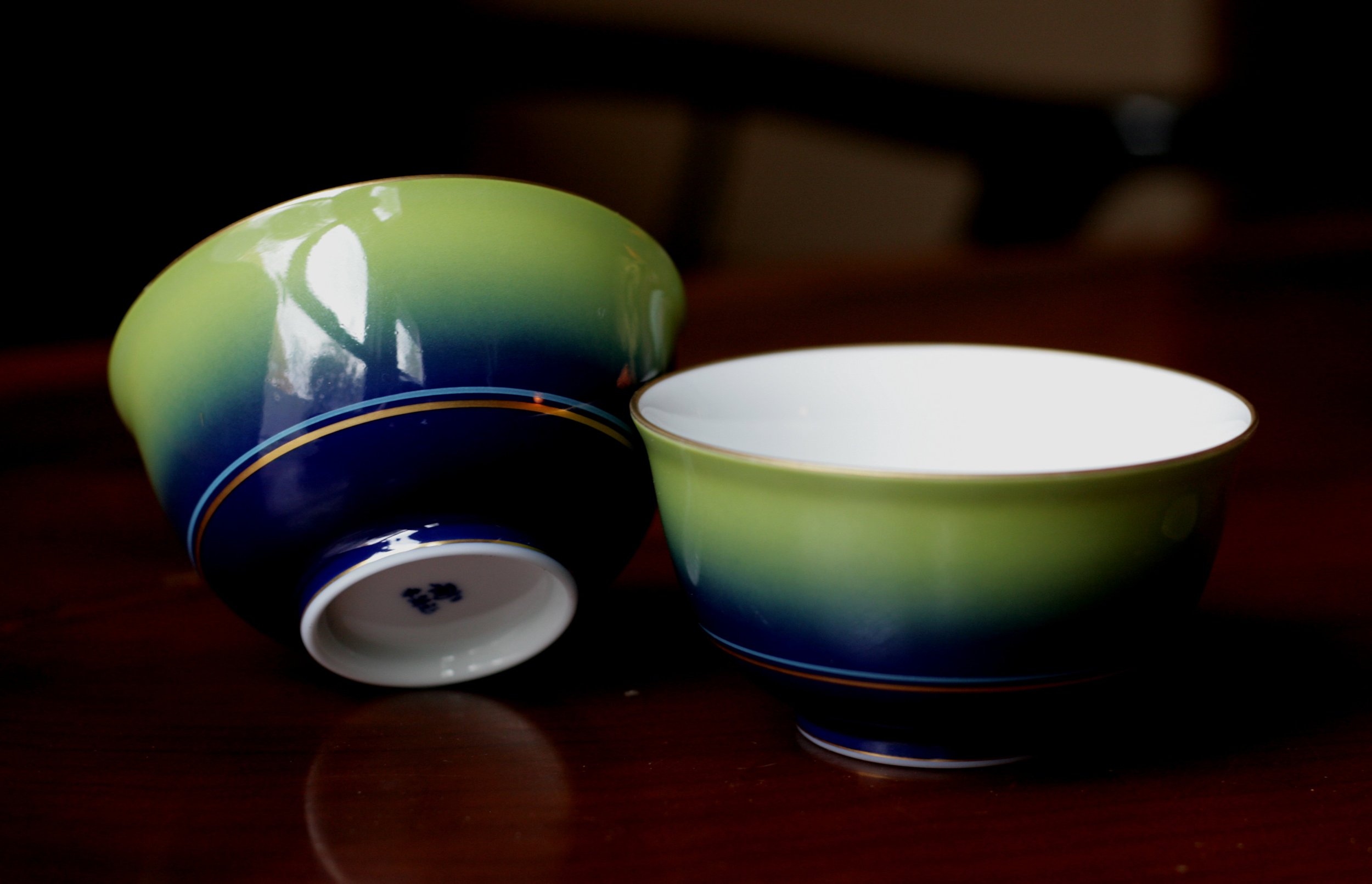 Image 1 of 7
Image 1 of 7

 Image 2 of 7
Image 2 of 7

 Image 3 of 7
Image 3 of 7

 Image 4 of 7
Image 4 of 7

 Image 5 of 7
Image 5 of 7

 Image 6 of 7
Image 6 of 7

 Image 7 of 7
Image 7 of 7








Vintage Koransha porcelain blue-green fade teacup (63)
Vintage Koransha porcelain blue-green fade teacup. Koransha ware is a type of fine Arita yaki porcelain. Beautiful and delicate cups. 9.5cm x 5cm. Sold individually.
Koransha ware is a famous Arita porcelain company founded in 1875 by Enzaiemon Fukugawa whose son, Chuji Fukugawa established the famous Fukugawa porcelain company of Arita in 1898. Both the Koransha and Fukugawa porcelain companies are emblematic of Arita fine porcelain production. Koransha means, The Scented Orchid Company, and its orchid mark stamped on the bottom of wares is a guarantee of quality.
Arita yaki is the traditional center for porcelain wares in Japan since the early 17th century. Arita is found in Saga prefecture on the island of Kyushu. Arita yaki is also known as Imari yaki because the porcelain wares were shipped out of the port city of Imari. Porcelain ware production began in China in the 17th century after the discovery of kaolin deposits in Izumiyama near Arita.
Stylistic elements of Arita yaki:
Sometsuke ware – blue and white porcelain ware with blue underglaze painting.
Iro-e – overglaze painting of blue, yellow, red, and green on a white body with transparent underglaze.
Ko-Imari – “old Imari”, a general term traditionally used to indicate Arita porcelain wares made during the Edo period (1603-1868). However, now it seems to indicate anything that is vintage-antique.
Vintage Koransha porcelain blue-green fade teacup. Koransha ware is a type of fine Arita yaki porcelain. Beautiful and delicate cups. 9.5cm x 5cm. Sold individually.
Koransha ware is a famous Arita porcelain company founded in 1875 by Enzaiemon Fukugawa whose son, Chuji Fukugawa established the famous Fukugawa porcelain company of Arita in 1898. Both the Koransha and Fukugawa porcelain companies are emblematic of Arita fine porcelain production. Koransha means, The Scented Orchid Company, and its orchid mark stamped on the bottom of wares is a guarantee of quality.
Arita yaki is the traditional center for porcelain wares in Japan since the early 17th century. Arita is found in Saga prefecture on the island of Kyushu. Arita yaki is also known as Imari yaki because the porcelain wares were shipped out of the port city of Imari. Porcelain ware production began in China in the 17th century after the discovery of kaolin deposits in Izumiyama near Arita.
Stylistic elements of Arita yaki:
Sometsuke ware – blue and white porcelain ware with blue underglaze painting.
Iro-e – overglaze painting of blue, yellow, red, and green on a white body with transparent underglaze.
Ko-Imari – “old Imari”, a general term traditionally used to indicate Arita porcelain wares made during the Edo period (1603-1868). However, now it seems to indicate anything that is vintage-antique.
Vintage Koransha porcelain blue-green fade teacup. Koransha ware is a type of fine Arita yaki porcelain. Beautiful and delicate cups. 9.5cm x 5cm. Sold individually.
Koransha ware is a famous Arita porcelain company founded in 1875 by Enzaiemon Fukugawa whose son, Chuji Fukugawa established the famous Fukugawa porcelain company of Arita in 1898. Both the Koransha and Fukugawa porcelain companies are emblematic of Arita fine porcelain production. Koransha means, The Scented Orchid Company, and its orchid mark stamped on the bottom of wares is a guarantee of quality.
Arita yaki is the traditional center for porcelain wares in Japan since the early 17th century. Arita is found in Saga prefecture on the island of Kyushu. Arita yaki is also known as Imari yaki because the porcelain wares were shipped out of the port city of Imari. Porcelain ware production began in China in the 17th century after the discovery of kaolin deposits in Izumiyama near Arita.
Stylistic elements of Arita yaki:
Sometsuke ware – blue and white porcelain ware with blue underglaze painting.
Iro-e – overglaze painting of blue, yellow, red, and green on a white body with transparent underglaze.
Ko-Imari – “old Imari”, a general term traditionally used to indicate Arita porcelain wares made during the Edo period (1603-1868). However, now it seems to indicate anything that is vintage-antique.